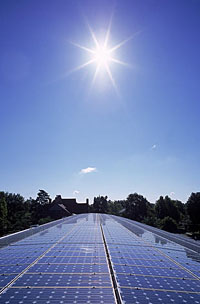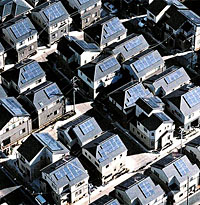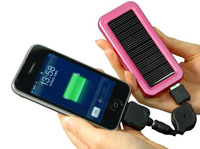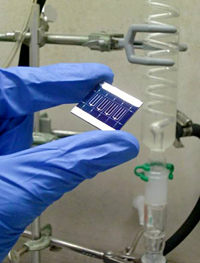Solar Power
Solar Power, A Useful Energy Source For the Modern World
[ad] Empty ad slot (#1)!
Solar power is considered by many scientists and environmentalists to be a key component in utilizing environmentally friendly energy to power the world. Our sun provides a tremendous amount of continuous power to the earth, and the use of modern day solar cells allow for mankind to harness this power in ways never before thought possible. With advancements in technology and manufacturing, solar harnessing technology is readily available at a cost that most can afford.
A Brief History of Mankind’s Usage of Solar Power
Solar power has been in constant use since the dawn of civilization. The sun was revered, sometimes deified, by the earliest cultures, and the heating and lighting components of the sun have always been an obvious benefit to mankind. But even ancient peoples found ways to better harness solar power to their advantage. Buildings were constructed in a such a way as to capture the maximum amount of lighting provided by the sun during the day, and also arranged the structure of the building to harness warmth while providing shaded areas to avoid overheating indoors. Farmers planted crops in a manner that could capture the maximum amount of sunshine. This could be done by placing the crops on levels to ensure one row of plants did not block another row’s exposure, or planting rows in a shape that would best track the movement of the sun across the daytime sky. In the 1800’s, enterprising inventors came up with ways to harness the sun’s energy through the use of mirrors and steam which provided crude, but somewhat effective, devices built to harness the sun’s energy.
In 1950, the biggest breakthrough in solar energy occurred, when three scientists from Bell Laboratories discovered that silicon held enormous potential for absorbing and conducting solar radiation. The worldwide energy crisis in the 1970’s led many governments scrambling to find alternative sources of energy. The solar cell finally began to be viewed as a useful and important source of power. Since then, the efficiency and manufacturing of solar cells has increased, though mankind has a ways to go before abandoning old, environmentally damaging sources of energy, like oil.
 How a Solar Cell Works
How a Solar Cell Works
The most commonly used method of capturing solar power is through the use of solar cells. A solar cell is a flat wafer-like object that is usually comprised of silicon and covered by a sheet of glass. The solar cell captures sunlight and converts it into electricity through a process called “photovoltaics”. The photovoltaic effect occurs when the radiation of sunlight hits the semiconducting material in the cell that naturally converts it to electricity. The solar cell is created in a way to channel the electricity in the direction needed which is then channeled into a storage device such as a battery. These solar chargers allow for power to be available even when direct sunlight is not available. Solar cells are usually grouped together into solar panels that maximize electricity production.
Concentrated Solar Power, Mirrors and Lenses
The other modern method of utilizing the sun is a method known as “concentrated solar power”. This technique uses large lenses and mirrors to focus the heat of the sun onto a heat powered engine (such as a steam engine) that, in turn, creates electricity–usually by way of a turbine. This is a technique usually utilized in large solar plants that have wide swathes of space to run the turbines, and is not as practical for domestic use.
Usage of Solar Power Today
Solar power plants exist in several countries. These large farms make use of photovoltaics or concentrated solar power to send power to the surrounding area. As the need for more replenishable fuel sources grows and the cost of technology decreases, more and more solar energy farms have cropped up worldwide. Several nations have embraced the use of solar technology, and the technology has gradually seen an increase in use. Aside from the large solar farming areas, smaller structures like domestic houses and businesses have installed solar panels.
The current cost of solar power involves not only the cost of the solar panels, but also the technology needed to integrate the system into an existing structure which involves inverters to convert the electricity into a usable form and batteries to store and distribute the energy (the energy coming from a solar panel is a direct current, which needs to be converted into an alternating current for modern use). The cost can be anywhere from a few dollars a watt, to over ten dollars a watt if the system is installed by a professional. The wattage of a solar panel represents how many watts of power will be generated every hour. For most houses and businesses, a solar power refit can cost from 20-60,000 or more, depending on size and power needs. The cost seems a bit overwhelming for some, but most solar panels have lifespans of thirty years or longer and more than pay for themselves several times over with the savings gained from cutting loose from standard power sources. With rising energy costs, the long-term cost savings of solar panel usage becomes more apparent. In addition, many governments provide tax discounts and other monetary incentives for those wishing to switch over to alternative energy sources like solar power.
Advantages and Disadvantages of Using Solar Power
The advantages of using solar power are numerous. The sun is expected to continue burning in its current state for another 5 billion years, which gives mankind quite the long-term energy source; humanity can harness as much of the sun’s power as needed without harming or depleting any natural resources. With hot button issues like global warming and the depletion of oil resources, having an unlimited source of power is an ideal solution and not an opportunity not to be overlooked. In addition, there are no harmful byproducts of solar energy; no pollutants are spread into the air or water. Solar energy is silent, unlike noisy generators that are the standard in most homes and businesses, and the lack of moving parts provides an almost maintenance free system.
 However, solar energy is not a perfected process yet. Particularly rainy areas, or areas closer to the poles that have periods of the year that don’t get much sunlight will not benefit as much from solar power in the current form. However, the benefits still exist for when sunlight is available, and solar energy can be used as a compliment to standard energy sources, similar to a system seen in hybrid automobiles. Advancements in technology are developing more efficient solar cells that are able to collect much more energy than before. This will allows areas with less sunlight to still receive a substantial amount of energy; furthermore, more advanced batteries will allow for better storage of captured energy.
However, solar energy is not a perfected process yet. Particularly rainy areas, or areas closer to the poles that have periods of the year that don’t get much sunlight will not benefit as much from solar power in the current form. However, the benefits still exist for when sunlight is available, and solar energy can be used as a compliment to standard energy sources, similar to a system seen in hybrid automobiles. Advancements in technology are developing more efficient solar cells that are able to collect much more energy than before. This will allows areas with less sunlight to still receive a substantial amount of energy; furthermore, more advanced batteries will allow for better storage of captured energy.
Developing countries that are less technologically advanced may not have the resources or funds to invest in developing solar power for their own use; however, due to the fairly recent proliferation of such technology, it is only a matter of time before it becomes more widely available to the world at large.
Solar Power, Not Just For Buildings Anymore
Solar power has not yet become a reliable way to power vehicles such as cars and boats, but constant study and experimentation in the field is underway. Solar energy uses in portable solar chargers, so you can charge almost anything that is rechargeable. Solar chargers for laptop are larger than ones made for cell phones.
As mankind’s abilities to harness the power of the sun increases, the technology will be better suited to provide power in almost every facet of life.
The Future of Solar Power
[ad] Empty ad slot (#1)!
The harnessing of solar power is still, in many ways, in its infancy. While the popularity of alternative sources of energy, like the sun, has been steadily growing in popularity and use, it still has a long road before it becomes a ubiquitous source of power for the majority of mankind. However, with the great advancements in technology and with more cost effective ways of manufacturing solar cells, the technology is gaining support and more widespread usage. Solar cells are being developed that are more efficient at gathering solar radiation; this will allow for areas that don’t get a great deal of sunlight to still reap the benefits of the technology.
It is only a matter of time before solar energy, along with other alternate energy sources, become the most commonly utilized energy sources. This applies not only to the homes and workplaces of the world, but also to anything that uses power. Automobiles, boats, even airplanes will someday make use of solar power. Mankind still has a long way to go before the shackles of polluting, unsustainable energy are finally cast off for good, but with the incredible advancements in technology and with the governments of the world embracing the benefits of solar power, the future looks bright indeed.
Solar Power, A Useful Energy Source For the Modern World | A Brief History of Mankind’s Usage of Solar Power | How a Solar Cell Works | Concentrated Solar Power, Mirrors and Lenses | Usage of Solar Power Today | Advantages and Disadvantages of Using Solar Power | Solar Power, Not Just For Buildings Anymore | The Future of Solar Power

 Usage of Solar Energy
Usage of Solar Energy Solar Plants
Solar Plants Solar panels for homes
Solar panels for homes Portable Solar Charger
Portable Solar Charger Mini Solar Cell
Mini Solar Cell
Efficiency of commercial solar panel is 33.9%, which would be distributed in 2012.
I am have keen interest in solar power, and wish to learn more and do more in this clean energy field.
pearsn
VERY USEFUL INITIATIVE ….I FEEL VERY HAPPY WITH YOUR PROJECTS
I want to learn how to make a simple solar charger.
When you are serious about your move to solar energy and begin using panels that sink more than 6 watts, invest in a solar controller. These small controls help maximize the efficiency of the charge cycle and prevent any wasted overcharging from occurring. When there is a lot of energy at stake, these are a must have for your solar-home.’
The most recently developed wind-turbine technologies have brought us wind-produced energy which is more cost efficient as well as more widespread. More state-of-the-art wind energy technologies are typically more market competitive with conventional energy technologies. The newer wind-power technologies don’t even kill birds like in days of old! Wind energy production is a growing technology, and companies engaged in it would make up an excellent part of a growth or aggressive growth portfolio.’